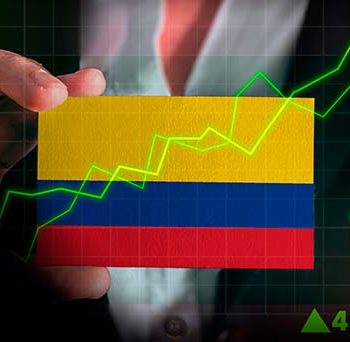
Fostering bilateral business opportunities between India and Colombia
- Posted by Colombia
- On Tuesday November 21st, 2023
- 0 Comments
India and Colombia can leverage multilateral cooperation and enhance investment through the Colombian Public-Private Partnerships (PPP) for infrastructure framework, an ambitious plan launched in 2015 as a 4 Generation Infrastructure Program – making Colombia the second country in all of Latin America with the most models of PPP after Chile.
Cristhian Salamanca Garcia
The 9th edition of the India and Latin-American & Caribbean (LAC) Conclave in New Delhi, organized by CII, was an excellent platform to meet many stakeholders and companies from various sectors that see our Latin-American region as a market or business destination. The event also had a robust academic agenda with different personalities, ministers, ambassadors and business representatives from LAC region and India, who met to foresee and boost the business relationships between the Indian subcontinent with Central and South America. The undersigned participated in the panel of “Infrastructure and energy: building a roadmap for development and energy transition”. After the panel, and with the rhythm of the event, and conclusions, there are some crucial points to highlight.
The total trading between India-LAC stands out at $50 billion. India’s export figures to some countries like Brazil ($10 billion), Mexico ($5 billion), Republica Dominicana ($329 million) or Colombia ($1.29 billion) are worth mentioning, as even India’s neighboring countries haven’t touched that level of trade, as mentioned by Dr S Jaishankar, MEA, during the inaugural session of the conclave.
An indicator of importance of the LAC region for India
With a targeted trade of $100 billion between our latitudes by 2027, set by Dr Jaishankar, it is important to have a crafted framework of action to achieve the same.
We can appeal – as a metaphor – to the traditional Indian wedding arrangements. Why? Because in general, many parents in India, do their due diligence to find the right partner for life for their children. Because, although it may be love at first sight, it is always important to know and understand your counterpart and check if they are compatible with you. Just as Indian parents visit, gather information, and check many other spoken and unspoken things, some points can be extrapolated to business to succeed on other latitudes. From either side, the other side can look exotic, captivating, interesting, but in the end, it is always a challenge.
For example, Colombia is a country in the extreme north of South America, bathed on the west by the Pacific Ocean, and on the north by the Caribbean Sea, with an extension of 1.142 million km², almost a third part of the size of India, and with 50 million population, it is now home to more than 45 Indian firms, as per the latest report by the Colombia-India Chamber of Commerce, with companies like TCS, TCS iON, Tech Mahindra, Bajaj, TVS, Royal Enfield, Cipla, Dr Reddy’s, MSN Labs, Hetero Labs, ONGC Videsh, and many others. It also counts with more than USD1 billion in FDI from India and with a total trade of USD 4 billion in the last FY between both countries. It is also a major player in the region, connected by air and sea, with good SEZ infrastructure that allows companies to take advantage of the many FTA agreements with other countries in the region, as well as with USA, Canada and Europe.
India and Colombia can leverage multilateral cooperation and enhance investment through the Colombian Public-Private Partnerships (PPP) for infrastructure framework, an ambitious plan launched in 2015 as a 4 Generation Infrastructure Program – making Colombia the second country in all of Latin America with the most models of PPP after Chile – something that has transformed mobility in the country, with the main objective to improve the country’s competitiveness, reducing the cost and times of transporting people and, especially, cargo, from the manufacturing plants to the ports.Currently, 132 infrastructure projects are being developed in the country that have to do with roads, airports, ports, and railways, of which 63 correspond to port areas; 46 to highway projects; 19 to airports; and4 railway projects.
However, hopes are placed on 5G concessions since 4G is at its peak, reaching 76,77 percent, with respect to the level of execution and the same are expected to be finished by 2025. In the next two years, 130 concessions of several large rail, road, port, and airport projects will take place in the country, representing billions of dollars in potential investment, for which the Colombian Government will welcome bids. Already the infrastructure sector has attracted investments close to USD 9 billion (COP $35 billion)since 2019, in areas like transportation, urban development, social infrastructure, water management and energy.
Another way to boost this cooperation is in the sector of renewable energy, given the significant reliance on water sources for energy production and in alignment with strategies to establish the nation as a worldwide sustainability pioneer, Colombia has introduced a contemporary regulatory, institutional, and market framework. This framework is designed to diversify the energy mix, thereby increasing the utilization of non-traditional renewable energy sources. The goal is to enhance installed capacity, leading to a 51 percent reduction in emissions by 2030 and ultimately attaining carbon neutrality by 2050.
Meanwhile, the Colombian government is actively promoting research and conducting studies centered around green and blue hydrogen. By 2050, Colombia’s estimations indicate it will boast the world’s fourth-lowest green hydrogen production costs, ranking second lowest within Latin America. The abundance of renewable resources, encompassing solar, wind, offshore wind, hydro, biomass, and geothermal energy, establishes a foundation for economical large-scale green hydrogen production on a global scale. Particularly advantageous conditions for generating green hydrogen are found in the regions of the Northern Caribbean and Northern Andes in Colombia. Anticipated high hydrogen demand in the markets of North America, Europe, and Asia further accentuates this potential. Most ports in Colombia are already equipped with infrastructure tailored for crude oil and gas import and export, which can be adapted for the transportation and storage of hydrogen and its derivatives.
Another area is manufactured products.
In recent years companies like Hero MotoCorp, Royal Enfield, UPL and Essel Propack have established factories to serve the local and international market. In the top 10 of the best-selling motorcycle brands in Colombia in 2022, there are some such as Bajaj, consolidated as the leading brand in the market, along with others such as AKT, TVS and Hero. UPL has two plants in Barranquilla and Madrid, are they are also planning to expand its operations, as Mr. Shroff, CEO UPL, said during the visit of Dr Jaishankar, to Bogotá “We are an export center and Colombia is key to expanding UPL in the region”. Their joint investments have crossed more than USD 150 million.
There is no doubt that India and the LAC region with its many countries can have a win-win situation, if more visits are promoted from either side, also if cultural exchange happens to understand each side point of view and values, and if intercultural management is also part of the strategy of the way of doing business. Options are available. But, finding the right partner requires patience, time and resources, but overall, like many Indian parents, we need to comply with the due diligence and facilitate the process and marry them.




0 Comments